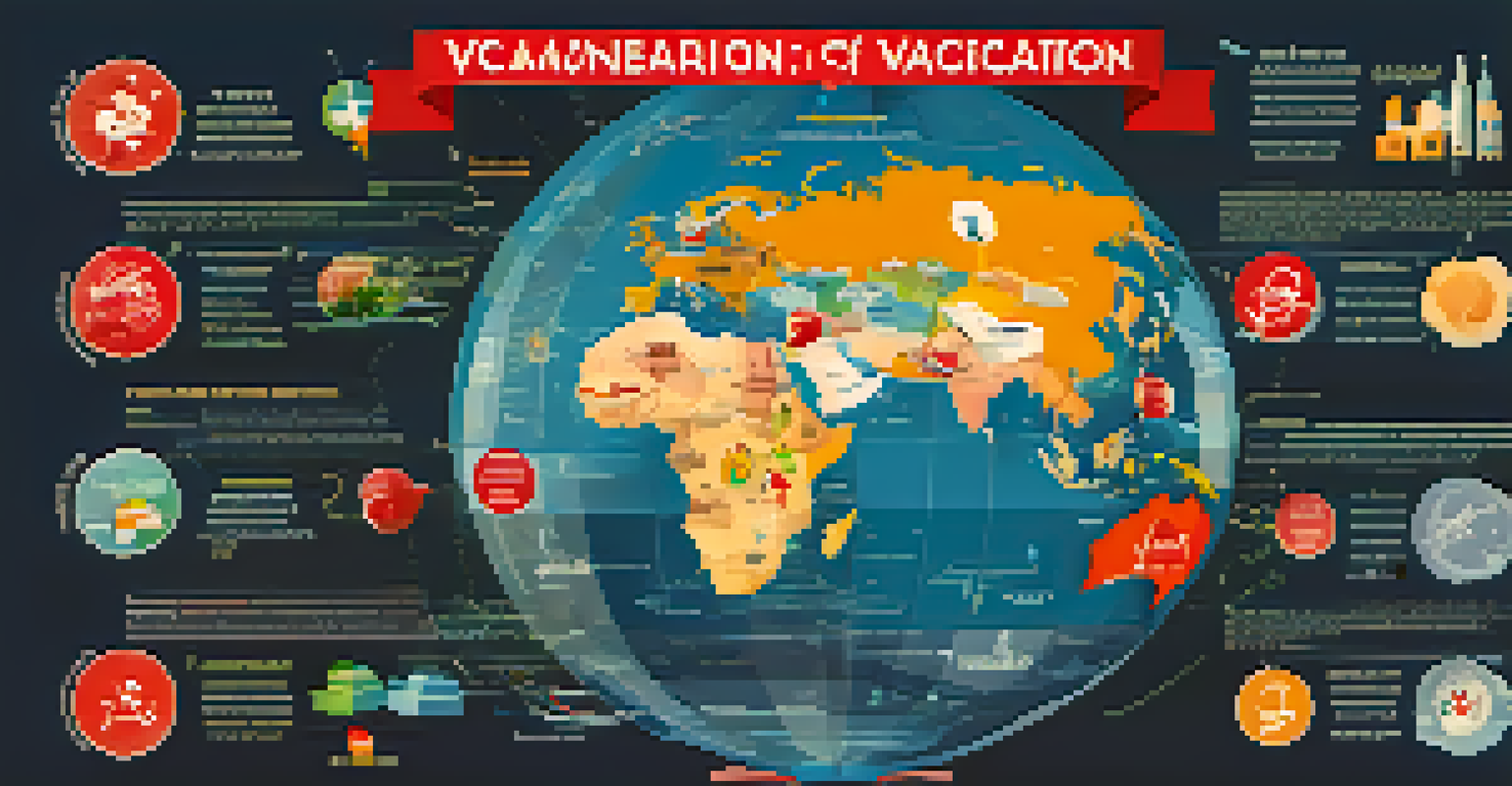The Global Impact of Vaccination on Child Mortality Rates

Understanding Child Mortality and Its Causes Globally
Child mortality refers to the death of children under five years old, a critical indicator of a country's health status. Each year, millions of children succumb to preventable diseases, often due to lack of access to vaccinations. Common causes include pneumonia, diarrhea, and measles, which can be effectively prevented with vaccines.
Vaccines are the tugboats of preventive health.
In many parts of the world, especially in low-income countries, the absence of vaccination programs leads to higher mortality rates. For instance, before widespread vaccination, diseases like polio and diphtheria claimed countless young lives. Understanding these factors is essential for tackling child mortality effectively.
Addressing child mortality requires a multifaceted approach, including improving healthcare access, education, and nutritional support. However, vaccinations remain one of the most critical components in reducing preventable deaths among children.
The Role of Vaccination in Preventing Diseases
Vaccinations work by preparing the immune system to fight infections, effectively preventing diseases before they can take hold. For example, the measles vaccine has drastically reduced the incidence of this once-common disease, which was known to cause severe complications and death in children.

When children are vaccinated, not only are they protected, but their immunity also contributes to 'herd immunity.' This means that when a significant portion of a population is vaccinated, the spread of the disease is limited, protecting those who cannot be vaccinated due to medical reasons.
Child Mortality and Vaccination
Child mortality rates can be significantly reduced through effective vaccination programs that prevent diseases.
The success of vaccination programs can be seen in the decline of diseases like smallpox, which has been eradicated, and polio, which is on the verge of elimination. These achievements highlight the transformative power of vaccines in safeguarding children's health.
Global Vaccination Initiatives and Their Successes
Various global initiatives have been established to improve vaccination rates, such as Gavi, the Vaccine Alliance, which focuses on low-income countries. By providing funding and resources, Gavi has helped immunize millions of children against deadly diseases like hepatitis B and yellow fever.
The best way to protect children is to vaccinate them.
Another significant initiative is the Global Polio Eradication Initiative, which has dramatically reduced polio cases worldwide. By employing a combination of vaccination campaigns and public awareness, this effort has brought us closer to eradicating this debilitating disease.
These initiatives not only enhance vaccination coverage but also promote health education, ensuring communities understand the importance of immunization. Collaborative efforts like these are essential in the ongoing fight against child mortality.
Challenges in Achieving Universal Vaccination
Despite the successes, achieving universal vaccination remains a challenge. Factors such as misinformation, vaccine hesitancy, and logistical barriers can hinder immunization efforts. In some communities, distrust in healthcare systems or myths surrounding vaccines can lead to lower vaccination rates.
Additionally, geographic barriers in rural areas often make it difficult for healthcare workers to reach children for vaccinations. Transportation issues and lack of resources can lead to missed opportunities for immunization.
Global Initiatives Improve Access
Global initiatives like Gavi and the Global Polio Eradication Initiative have successfully increased vaccination coverage in low-income countries.
To overcome these challenges, it’s vital to engage communities and provide accurate information about vaccines. Building trust and accessibility can significantly improve vaccination rates and, consequently, child mortality rates.
The Economic Impact of Vaccination on Child Mortality
Investing in vaccination programs not only saves lives but also has a profound economic impact. Healthier children contribute to a more productive workforce, driving economic growth and stability. For every dollar spent on vaccines, substantial savings can be achieved in healthcare costs and increased productivity.
Moreover, reducing child mortality rates can lead to long-term benefits for families and communities. Parents can invest more in education and nutrition, contributing to the overall well-being of future generations.
Thus, the economic argument for vaccination is compelling. Governments and organizations must prioritize funding for immunization programs to ensure sustainable development and healthier populations.
The Role of Technology in Vaccination Efforts
Technology plays a crucial role in enhancing vaccination efforts worldwide. Data analytics and mobile health applications can track vaccination coverage, identify gaps, and facilitate outreach to underserved populations. This information is vital for making informed decisions on resource allocation.
Moreover, advances in vaccine development, such as mRNA technology, have revolutionized how we approach immunization. This technology accelerated the production of COVID-19 vaccines, demonstrating how quickly we can respond to emerging health threats.
Technology Enhances Vaccination Efforts
Advancements in technology, such as data analytics and mRNA vaccines, play a crucial role in improving vaccination outreach and effectiveness.
By harnessing technology, we can improve the efficiency and effectiveness of vaccination campaigns, ultimately reducing child mortality rates on a global scale.
Looking Ahead: The Future of Vaccination and Child Health
The future of vaccination holds immense promise for improving child health outcomes. Continued research and innovation in vaccine development can lead to new vaccines for diseases that currently have no effective immunization. This is particularly crucial as we face new and emerging infectious diseases.
Moreover, global collaboration and commitment to vaccine equity will be vital in ensuring that all children, regardless of their location, have access to lifesaving vaccinations. Initiatives aimed at reducing disparities in healthcare access will be key to achieving this goal.

Ultimately, with sustained efforts and investment in vaccination programs, we can envision a world where child mortality rates continue to decline, giving every child the chance to thrive.